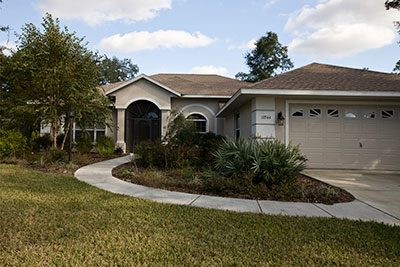Your Florida Lawn in Winter

Even though a Florida fall isn’t very cold, it’s still a good time to start preparing your lawn for cold weather. Shorter days, lower light intensity, and cooler temperatures result in slower-growing lawns.
You might be tempted to apply one last round of fertilizer to your lawn. But timing is important. The last recommended time to fertilize your lawn in North Florida is in September. In Central Florida, October’s the latest. A high-potassium fertilizer would be best for this time of year. Fertilizing too late could cause the grass to be growing when cold weather comes, making it more cold-sensitive.
If you missed your fall application, there’s no need to worry. As growth begins in the spring, just apply an appropriate fertilizer for your lawn type, and your turf will respond with fresh growth and vigor. In some parts of South Florida, it’s warm enough that your grass may grow—and need fertilizer—year-round.
Centipede and St. Augustine lawns are very susceptible to large patch fungus disease in the fall. Avoid excess nitrogen fertilizer and water early in the day to avoid long periods of leaf wetness. Apply fungicides if you’ve had repeated problems with this disease. Scout for sod webworms, as this is the time of year that they can become very destructive, with little time for turf recovery before winter dormancy.
Overseeding the Lawn

Would you like your lawn to look green for the winter? Try overseeding. It’s when you plant a temporary grass to provide a green lawn all winter. North and Central Florida lawns are good candidates for overseeding. South Florida lawns won’t need it, as they typically stay green all year.
Ryegrass is popular for overseeding because of its fast growth and low cost. It should be sown once daytime highs have fallen to the low- to mid-70s.
Rake the grass to remove all debris, then mow your lawn before sowing the seed. You’ll need to water your overseeded lawn frequently until it has germinated. Once the winter lawn is established, it will require watering, mowing, and fertilizing.
Grasses used for overseeding will die off as temperatures rise in the spring.
Coloring Your Lawn
Another way to keep your winter lawn green is with turf colorants. These special colorants are paints and dyes that have traditionally been used on golf courses and professional athletic fields.
Some cities now have companies that will apply them to home lawns. Customers enjoy a green lawn all winter without the mowing or watering that would be required with an overseeded lawn.
Keep in mind that you don’t want to try this with paint from the hardware store. Turf colorants are specially formulated to be safe for the grass and the environment.
